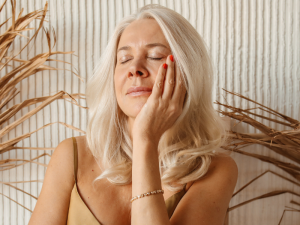Contact us today! Call 814-438-2512 or Text 814-720-7943
25 Years of Service, Established 2000
Adjusted hours: 12/31 10am-12pm, 1/1 CLOSED. Saturday winter hours - 10am-3pm.
Contact us today! Call 814-438-2512 or Text 814-720-7943
25 Years of Service, Established 2000

When you take an ice bath, the cold temperature narrows your blood vessels. This decreases blood flow to your muscles, which may reduce inflammation and swelling. When you get out of an ice bath, your blood vessels dilate, or widen, which increases circulation. The nutrient-rich blood flow to your muscles may help remove metabolic waste that builds up during exercise. This allows for faster muscle recovery.

Immersing yourself in cold water can activate your “fight or flight” response. This reaction triggers the release of adrenaline, a hormone that sharpens your senses and prepares you for action. Simultaneously, your body works to overcome the cold by increasing oxygen intake. This potent combination of adrenaline and increased oxygen floods your system, resulting in a noticeable surge in energy, heightened alertness, and a laser-like focus that can last for hours after you emerge from the cold.

A small study found that taking a 20-minute ice bath every day improved their quality of life. The study’s participants had better joint mobility and less stress, anxiety, and depression after 4 weeks. Scientists think that exposing your body to cold water triggers a stress response and activates the nervous system. These changes can improve your mood and help you adapt to stress over time. It has also been found that cold water shock releases endorphins which help to reduce stress and anxiety, improve sleep quality, and promote a sense of well-being.

Cold water helps tighten the pores, making the skin look smoother and reducing the appearance of acne and blemishes. It can also promote healthier hair by closing the hair cuticles and making the hair shinier and less prone to breakage.

When immersed in cold water, the body activates brown fat to generate heat and maintain core temperature. When heat leaves your body, calories leave your body. This stimulation of brown fat can breakdown stored fat leading to an increased metabolic rate and weight loss. Some research also suggests cold plunges may improve the way the body utilizes insulin and regulates blood sugar levels, potentially reducing the risk of diabetes.

Cold stimulation has also been found to activate the vagus nerve, which helps regulate the nervous system in times of stress. By willingly immersing yourself in cold water—which, for most people, is very uncomfortable—you’re training your nervous system to relax in a controlled yet higher stress environment.

Have a robe, towel, or blanket ready for when you exit to warm up. It’s recommended to have a partner at least your first few times to monitor your well-being and assist if needed.
To get started, begin with a higher temperature and shorter duration to let your body adapt—aim for water between 50-60°F for just 1-2 minutes, or whatever length you can comfortably handle. Over time, as your tolerance builds, you can gradually lower the temperature to as low as 40°F and extend sessions to 3-5 minutes. Consistency is key to building tolerance and reaping full benefits. Start with 2-3 session per week, working your way up to 4-5 sessions over time. Studies suggest around 11 minutes of total cold exposure per week to be the most effective for optimal results.
It’s important to remember to listen to your body and prioritize safety by pacing yourself and not push too far. The cold should not feel overwhelming. If it’s simply too cold and uncomfortable, or if you experience numbness or lightheadedness, exit the tub immediately and opt for a warmer temperature and shorter session next time to ensure a positive and sustainable experience.
**The information provided on this website is for general knowledge and informational and educational purposes only, and does not constitute medical advice.
**References:
Chill Springs
Cold Tub Study – Benefits
Beginners Guide to Cold Plunge